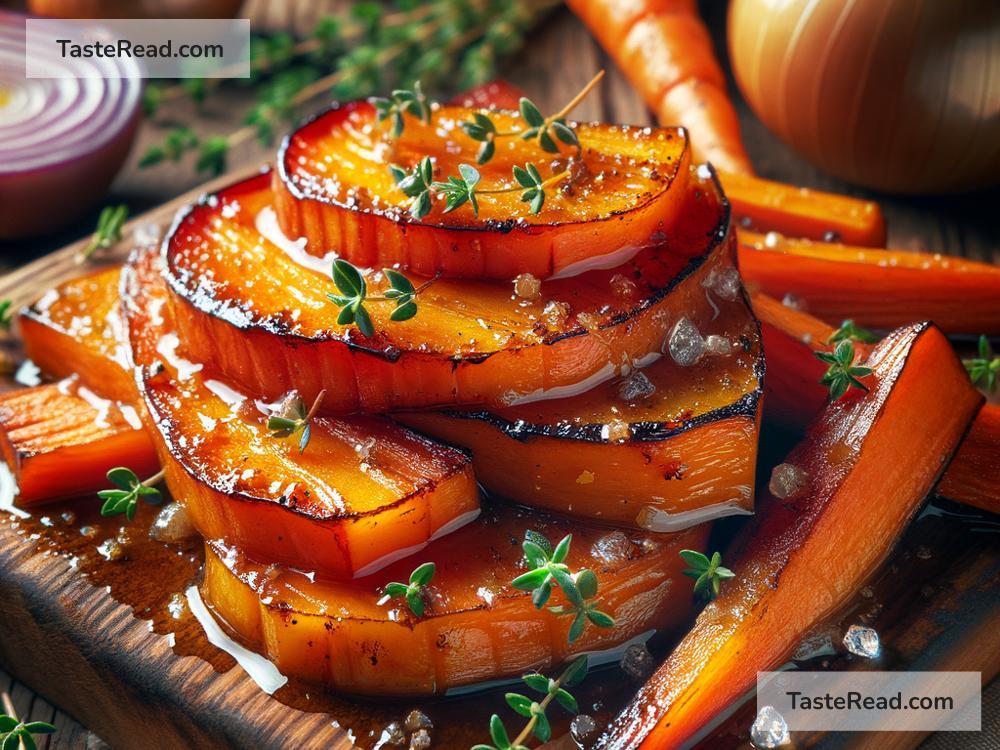Why Some Vegetables Taste Sweeter When Caramelized
Have you ever roasted carrots, onions, or sweet potatoes in the oven, only to discover that they taste sweeter than when eaten raw or steamed? This delightful transformation is thanks to a cooking process called caramelization—a magical chemical reaction that turns simple vegetables into sweet, flavor-packed treats. But what’s really happening here? Why do some vegetables taste sweeter when caramelized? Let’s break it down in simple terms.
What is Caramelization?
Caramelization is a type of chemical reaction that happens when heat breaks down the natural sugars found in food. Most vegetables (and many fruits) contain sugars like glucose, fructose, and sucrose. When you cook these vegetables at a high temperature—typically between 300°F and 400°F (149°C to 204°C)—these sugars start to break down and reorganize into new compounds. These new compounds bring out the rich, sweet, and slightly nutty flavors we associate with caramelized foods.
Caramelization isn’t just about sweetness; it’s also about depth of flavor. In addition to tasting sweet, caramelized vegetables can have hints of bitterness, nuttiness, or even a buttery quality. That’s why roasted vegetables are so irresistible—they hit all the right flavor notes at once!
Which Vegetables Benefit the Most?
Not all vegetables caramelize equally because the sweetness depends on their natural sugar content. Vegetables with higher levels of sugar tend to caramelize better than those with lower sugar levels. Here’s a list of some vegetables that taste naturally sweeter when caramelized:
- Carrots: Their natural sweetness gets amplified during caramelization, making them taste even sweeter and richer.
- Onions: Raw onions are famously sharp and pungent, but after caramelizing, they turn into soft, sweet, golden strands of deliciousness.
- Sweet Potatoes: As their name suggests, sweet potatoes already contain a lot of sugar, so caramelization makes them taste almost dessert-like.
- Beets: Cooking beets brings out their earthy sweetness and makes them taste less “raw.”
- Parsnips: These root vegetables develop a warm, sugary flavor when caramelized.
- Bell Peppers (especially red ones): Red bell peppers are naturally sweet and become even more vibrant and flavorful when roasted.
Other vegetables like zucchini, broccoli, and cauliflower can caramelize, but they don’t become overwhelmingly sweet because they have less sugar.
How Caramelization Works
To understand why caramelized vegetables taste sweeter, let’s dive into the science behind the process—don’t worry, we’ll keep it simple!
At high temperatures, the natural sugars in vegetables break down into smaller molecules. These molecules react with each other and create entirely new substances, many of which are sweet-tasting. In addition, caramelization produces compounds that give food color and complex flavors. The longer you cook the vegetables, the darker and more intense the flavors become.
Caramelization is closely related to another cooking reaction called the Maillard reaction. While caramelization involves sugar alone, the Maillard reaction occurs when sugars combine with proteins. This reaction also plays a role in browning and flavor development in roasted vegetables, but it’s more commonly associated with browning meat or baking bread.
Why Heat is Key
Heat is the secret ingredient to caramelized sweetness. Low temperatures like steaming or boiling aren’t hot enough to cause caramelization. These methods cook vegetables quickly and preserve their natural flavors, but they won’t bring out the deeper, sweeter notes.
To caramelize vegetables, you need dry heat, such as from roasting, sautéing, or grilling. These methods not only cook the vegetables but also reduce moisture, concentrating their flavors.
It’s important to note that cooking for too long or at too high a temperature can burn the sugars instead of caramelizing them. Burnt vegetables have a bitter flavor, so it’s all about finding the sweet spot where the sugars are perfectly browned.
Helpful Tips for Caramelizing Vegetables
Want to caramelize vegetables at home? Here are some tips to get the best flavor:
- Cut Vegetables Evenly: Uniform sizes help them cook evenly, preventing some pieces from burning while others stay raw.
- Add Oil: Tossing vegetables in a little oil helps them brown evenly and keeps them from sticking to the pan.
- Don’t Rush: Caramelization takes time. Start with high heat, then lower the temperature slightly if needed to prevent burning.
- Spread Them Out: Overcrowding the pan traps steam, which prevents caramelization. Arrange vegetables in a single layer for the best results.
- Use Seasonings: Adding salt or spices enhances the natural sweetness of the vegetables.
Why Do We Love Sweet Vegetables?
Humans are naturally drawn to sweet flavors because they signal energy-rich foods. In caramelized vegetables, sweetness pairs beautifully with the savory and earthy flavors, creating a perfect balance. This is why roasted vegetables often feel heartier and more satisfying than their raw counterparts.
The Takeaway
Caramelization brings out the natural sweetness of vegetables by breaking down their sugars under high heat. This simple yet fascinating chemical process turns ordinary vegetables into extraordinary bites of deliciousness. Whether you’re roasting carrots, caramelizing onions, or grilling sweet potatoes, you now know why they taste so much sweeter—and why your taste buds can’t get enough. Next time you cook, take your time to caramelize your vegetables—you’ll be pleasantly surprised by the results!


